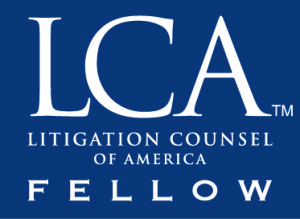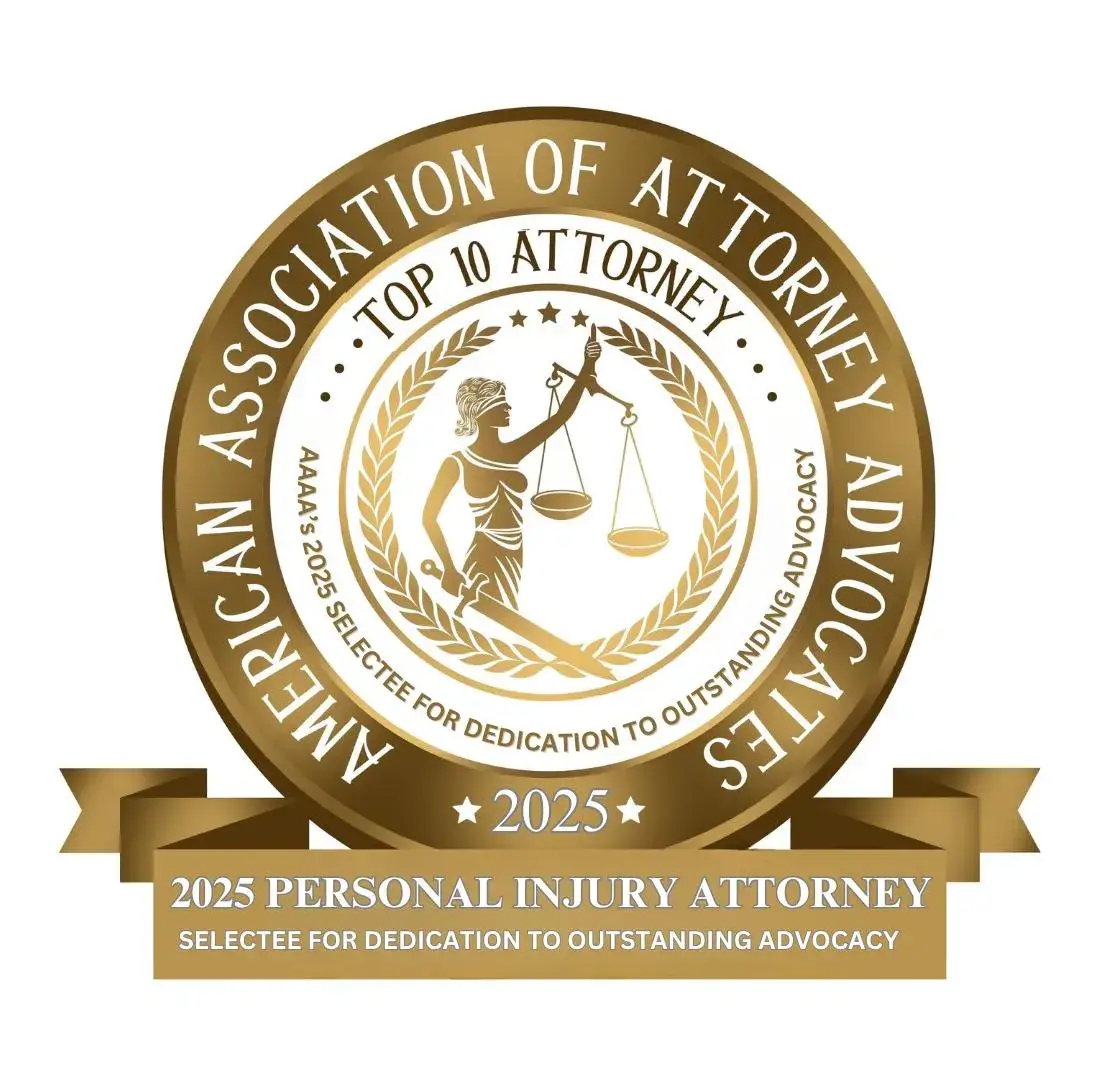
How Much Is a Head Injury Claim Worth?
Head injuries often result in significant physical, emotional, and financial harm. Whether caused by a car accident, slip and fall, assault, or workplace incident, the legal process for determining compensation depends on several fact-specific and jurisdictional factors. Injured victims and their families may have questions about how these claims are valued, how long recovery takes, and what evidence is needed to support a lawsuit.
In New York and New Jersey, head injury claims may involve temporary impairment, permanent disability, or long-term care needs. The severity of the injury, the legal standards that apply, and the available insurance coverage can all affect the potential outcome.
This article by Maggiano, DiGirolamo & Lizzi, PC explains how much a head injury is worth, how compensation is calculated, what legal principles apply in each state, and how claimants can protect their rights.
How much is a head injury claim worth?
- Severity drives value: Concussions may bring $20,000–$75,000, while severe TBIs can exceed $1 million, especially if lifelong care is needed.
- Economic losses matter: Compensation includes medical bills, lost income, rehab costs, and future care needs.
- Non-economic damages apply: Pain, emotional trauma, and reduced quality of life are factored into the claim amount.
- Settlement type varies: Victims may receive lump sums or structured settlements depending on the case and age of the injured party.
- State law impacts value: New York’s pure comparative fault allows claims even if you were mostly at fault; New Jersey bars recovery over 50% fault.
- Proof strengthens claims: CT/MRI scans, doctor’s notes, lost wage records, and therapy reports all raise a claim’s potential value.
Key Factors That Influence Head Injury Compensation
The value of a head injury claim is not based on a single formula. Courts and insurance carriers review the type of injury, financial losses, and long-term consequences. Each case is evaluated on its own evidence and legal merit.
Type and Severity of the Head Injury
Head injury claims may involve a broad spectrum of conditions, ranging from mild concussions to severe traumatic brain injuries. The severity of the injury plays a significant role in determining the value of a claim. For example:
- Mild concussion. May result in temporary dizziness, headaches, or cognitive difficulty, but symptoms often resolve within a few weeks.
- Moderate traumatic brain injury (TBI). May involve loss of consciousness, confusion, speech or vision issues, and lasting cognitive deficits.
- Severe TBI. Can result in permanent disability, loss of mobility, impaired reasoning, and the need for around-the-clock medical care.
Medical documentation, diagnostic imaging, and neurological evaluations classify the injury. The more severe and permanent the impairment, the greater the compensation potential.
Economic Damages
Economic damages represent the measurable financial losses caused by the injury. These damages are typically supported by documentation such as invoices, pay stubs, and medical records. Common economic losses include:
- Medical expenses. Ambulance transportation, emergency room services, hospital stays, CT scans, MRIs, surgical intervention, outpatient visits, rehabilitation, and medications.
- Lost income. Missed workdays due to hospitalization or recovery. In cases of permanent disability, loss of earning capacity may also apply.
- Long-term care. In severe injury cases, home health aides, physical or occupational therapy, and modifications to the home or vehicle may be recoverable.
- Out-of-pocket costs. Transportation to appointments, medical devices, and co-pays are often included.
The total value of these losses can increase over time if the injured person requires ongoing care or cannot return to their previous employment.
Non-Economic Damages
Non-economic damages account for the personal impact of the injury. These losses do not have a fixed financial value, but courts and insurance companies consider them when determining compensation. Common categories include:
- Pain and suffering. Ongoing physical discomfort, loss of energy, or severe headaches.
- Emotional distress. Mood changes, anxiety, depression, or social withdrawal caused by the injury or its aftermath.
- Loss of enjoyment of life. The inability to participate in once-enjoyed activities such as sports, hobbies, or social gatherings.
- Loss of consortium. Strain on marital or parental relationships due to changes in personality or function.
Documentation from therapists, family members, or medical professionals may support claims for non-economic damages. Courts may also consider the plaintiff’s age, occupation, and prior health condition.
Average Settlement Ranges in New York and New Jersey
Settlement values vary based on the facts of the case and the location where it is filed. While averages can offer a reference point, every claim must be evaluated on specific facts and available evidence.
What Do Settlements Typically Include?
Head injury settlements generally consist of two categories:
- Lump sum settlements. These involve a single payment that covers all current and future damages.
- Structured settlements. In more serious cases, payment may be made over time through a financial annuity, particularly when the injury involves minors or catastrophic impairment.
Settlements also account for medical liens, attorney’s fees, and any amounts advanced by insurance carriers under no-fault or MedPay provisions. In some cases, settlements must be approved by the court, especially if the injured party is a minor or legally incapacitated.
Average Settlement for TBI in New York
In New York, traumatic brain injury settlements range widely depending on severity, liability, and venue. Moderate injury claims may result in settlements between $75,000 and $300,000. In permanent disability cases, verdicts and structured settlements may exceed $1 million.
Jurors in New York City and surrounding counties tend to return higher verdicts for non-economic harm, but these amounts are often reduced on appeal unless supported by substantial documentation.
Judicial precedents also influence settlement value. Previous case outcomes in the same venue, particularly those involving similar injuries, help guide negotiations.
Head Injury Compensation in New Jersey
In New Jersey, compensation values are influenced by county-specific jury trends and insurer settlement practices. Middlesex, Hudson, and Essex counties are considered more favorable to plaintiffs than others.
Average settlements for mild to moderate TBI typically fall between $50,000 and $250,000. Severe cases that involve loss of consciousness, permanent neurological impairment, or long-term care needs may result in awards above $500,000.
Because New Jersey applies a modified comparative negligence rule, any shared fault can reduce recovery or bar it entirely if the injured party is deemed more than 50 percent responsible.
Legal Rules That Impact Compensation in NY and NJ
Legal principles specific to New York and New Jersey affect the compensation amount and whether a person can recover. These rules should be considered early in the claim process.
Comparative Negligence Laws
New York uses a pure comparative negligence model. Under this system, a plaintiff may recover damages even if they are primarily at fault. The court will reduce the award in proportion to the plaintiff’s share of responsibility.
New Jersey follows a modified comparative negligence rule. If the plaintiff is more than 50 percent responsible, they cannot recover damages. The award is reduced accordingly if they are 50 percent or less accountable.
These rules often become a point of contention during insurance negotiations and trial proceedings. Defendants may attempt to shift partial fault to the injured party to reduce their financial exposure.
Statutes of Limitations
Strict deadlines apply to all personal injury claims. These deadlines vary by jurisdiction and by the type of defendant involved.
- In New York, personal injury claims must be filed within three years of the date of injury. If the defendant is a municipal agency, a Notice of Claim must be filed within 90 days.
- In New Jersey, the statute of limitations for personal injury is two years. Claims against public entities must also comply with the Tort Claims Act, including notice within 90 days of the incident.
Failure to meet these deadlines can result in dismissal, even if liability is clear. Injured parties are encouraged to take prompt action to preserve their rights.
Evidence That Strengthens a Head Injury Claim
The strength of a head injury claim depends not only on the severity of the injury but also on the quality and consistency of the evidence provided. Proper documentation can influence whether an insurer accepts liability, how much compensation is offered, and whether a jury finds the claim credible at trial.
Required Medical Documentation
Medical records serve as the foundation of any injury claim. For head injuries, documentation should include:
- Emergency department evaluations and imaging results (CT, MRI)
- Neurological assessments by treating physicians
- Records of ongoing treatment, such as cognitive rehabilitation or vestibular therapy
- Prescription records and therapy notes
- Physician narratives that explain symptoms, prognosis, and work restrictions
A detailed and uninterrupted timeline of care strengthens the causal link between the injury and the accident. Gaps in treatment or inconsistent documentation may weaken the claim.
Supporting Legal and Economic Evidence
In addition to medical records, several other forms of documentation can support damages:
- Police or incident reports that describe the accident and identify the parties involved
- Photographs of the scene and physical damage, including damage to the vehicle or surrounding property
- Witness statements that confirm erratic driving, unsafe property conditions, or the impact of the injury
- Employment records showing missed work, reduced hours, or job termination due to impairment
- Reports from vocational rehabilitation professionals or economists in cases of long-term wage loss
Each piece of evidence helps build a cohesive picture of how the injury occurred and the extent of its impact.
Psychological and Emotional Assessments
Head injuries often result in cognitive and emotional symptoms that are not visible on imaging scans. These symptoms may include irritability, memory loss, depression, or difficulty concentrating. Supporting evidence may include:
- Notes from treating psychologists or psychiatrists
- Diagnostic assessments for anxiety, PTSD, or cognitive impairment
- Testimony from family members or coworkers regarding behavioral changes
When supported by credible evidence, emotional and psychological consequences are recoverable under both New York and New Jersey law.
Special Considerations in Head Injury Litigation
Not all head injury claims follow the same pattern. Certain cases involve additional legal issues, procedural requirements, or evidentiary needs.
Children With Head Injuries
When a child sustains a head injury, the legal process must account for their age, developmental stage, and long-term needs. Children may experience delayed symptom onset or developmental challenges that are not apparent until years later.
Claims involving minors may require:
- Extended observation periods before final settlement
- Approval of any settlement by the court
- Appointment of a guardian or trustee for managing funds
- Expert projections of future educational, occupational, and care needs
New York and New Jersey courts apply different procedures for minor settlements, and legal deadlines may be extended until the child reaches the age of majority.
Head Injuries from Car Accidents
In motor vehicle cases, liability may involve another driver, a government entity responsible for roadway maintenance, or a manufacturer in cases involving defective airbags or seat belts.
Common legal issues include:
- Insurance policy limits and whether the at-fault driver carries sufficient coverage
- Access to uninsured or underinsured motorist benefits under the injured party’s policy
- Admissibility of dashcam footage or black box data to establish fault
New York is a no-fault state, meaning personal injury protection initially covers basic medical costs. However, lawsuits for pain and suffering may proceed if the injury meets the “serious injury” threshold under New York Insurance Law § 5102(d).
Slip and Fall Head Injuries
Slip and fall accidents often result in blunt head trauma, particularly when the individual is thrown backward. Premises liability law governs these cases.
To succeed in a claim, the injured party must prove:
- A hazardous condition existed on the property
- The property owner knew or should have known about the condition
- The owner failed to correct it or provide a warning
Photographs, maintenance records, and surveillance footage often play a key role. In New Jersey, the “mode of operation” rule may shift the burden to the defendant in specific commercial settings.
Workplace Head Injuries
Workers’ compensation may cover head injuries sustained on the job. However, in some situations, a third-party claim may also be possible, such as when the injury was caused by a subcontractor, equipment manufacturer, or negligent property owner.
New York Labor Law §§ 240 and 241 impose strict liability on contractors and owners in certain construction-related accidents. These statutes may allow injured workers to pursue damages outside the workers’ compensation system.
Head Injury Claim Timeline and Process
The process for resolving a head injury claim can vary in duration and complexity, but generally follows a structured progression from investigation to settlement or trial.
Initial Consultation and Investigation
The legal process begins with a consultation, during which the attorney evaluates liability, injuries, insurance coverage, and applicable legal deadlines. If the claim is viable, the attorney may initiate:
- Collection of medical records and police reports
- Interviews with witnesses
- Notification to insurers
- Retention of accident reconstruction specialists or medical consultants
Timely investigation preserves evidence and strengthens settlement leverage.
Negotiation and Pre-Litigation Settlements
Many claims resolve before a lawsuit is filed. Insurance carriers evaluate the claim and issue a settlement offer. Negotiations may involve:
- Formal demand letters outlining damages
- Submission of supporting documentation
- Mediation with a neutral third party
Offers during this phase may be lower than the claim’s full value. Claimants should be cautious when accepting early settlements, especially if symptoms are ongoing or future care needs remain uncertain.
Litigation and Trial Preparation
A lawsuit may be filed in the appropriate state court if the insurance company does not offer a fair settlement. Litigation includes:
- Filing of pleadings (complaint and answer)
- Discovery process, including depositions and exchange of documents
- Retention of medical, vocational, and economic experts
- Pretrial motions and settlement conferences
The jury will evaluate liability and determine damages if the case proceeds to trial. Verdicts are subject to post-trial motions and, in some cases, appeal.
When to Contact a Head Injury Attorney
Legal representation is not required in every case, but some signs indicate that assistance may be appropriate. These include:
- Disputed liability or unclear fault
- Denial of coverage by the insurance company
- Symptoms that persist or worsen over time
- Multiple liable parties, such as in commercial vehicle or construction claims
- Head injury involving a child or an incapacitated adult
- The need to calculate future medical and wage losses
A personal injury attorney can ensure deadline compliance, develop a structured legal argument, and prevent insurers from undervaluing claims. Legal counsel also reduces the injured party’s administrative burden and allows for a more thorough presentation of damages.
Contact a Head Injury Attorney in New York or New Jersey
If you or a loved one sustained a head injury due to another party’s negligence, you may be eligible to recover compensation for your medical expenses, lost income, and long-term impact.
Head injury claims often require detailed evidence, legal analysis, and strong negotiation to secure an appropriate outcome.
Maggiano, DiGirolamo & Lizzi, PC represents injured individuals throughout New York and New Jersey. Our head injury attorneys handle traumatic brain injury, concussion, and severe head trauma cases involving car accidents, unsafe premises, and job site hazards.
Call (201) 585-9111 for a free consultation with an experienced head injury lawyer. You may also reach us using our online contact form. There is no obligation, and your case will be evaluated by a legal team with a strong record of results in high-stakes personal injury litigation.
Frequently Asked Questions About Head Injury Claims
Can I recover compensation for a concussion?
Yes. Even mild head injuries may result in compensation if symptoms interfere with work or daily life. Documentation and timely treatment are necessary.
What if head injury symptoms appear days after the accident?
Delayed symptoms are common with brain injuries. Prompt evaluation helps confirm the cause and supports the claim.
Are non-economic damages capped in New York or New Jersey?
Neither state imposes statutory caps on pain and suffering damages in personal injury cases.
Can I file a claim without a confirmed diagnosis of TBI?
A formal diagnosis is not required, but objective symptoms and treatment records are necessary to establish injury and causation.
How long do head injury claims usually take to resolve?
Uncontested cases may resolve in several months. Claims involving litigation, serious injuries, or disputed fault may take more than one year.



















